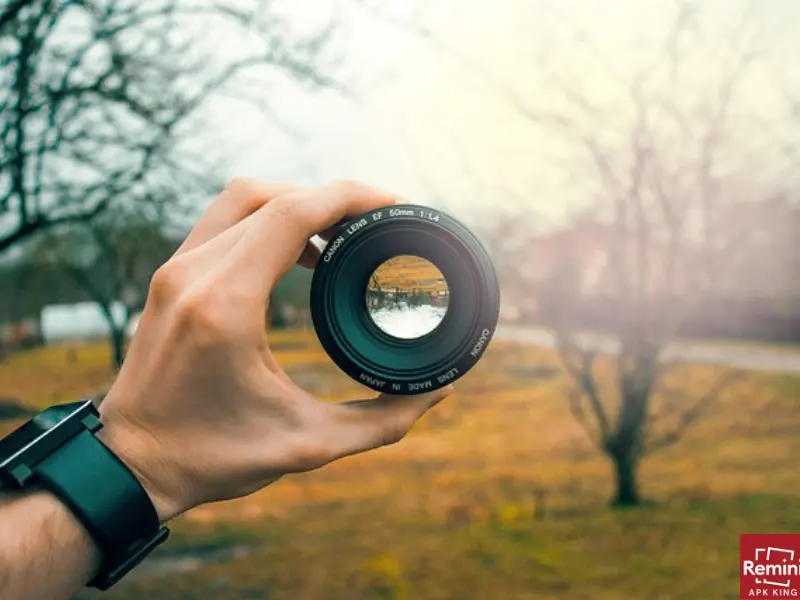6 Reasons Why You’re Getting Blurry Photos
Did you know that nearly 70% of photos taken by amateurs end up blurry due to simple mistakes? Blurry photos are one of the most common problems faced by both casual photographers and professionals alike. Whether you’re using your smartphone or a high-end camera, these issues can still creep in, leaving you frustrated with the results.
In this post, we’ll uncover the 6 reasons why you’re getting blurry photos and show you practical solutions to fix them. By understanding these common issues, you’ll be able to capture clear and sharp images every time.

Camera Shake
Camera shake is an important concept in photography because it directly impacts the quality and clarity of an image. When the camera moves during the exposure, even slightly, it can cause the photo to blur, making it difficult to capture fine details and sharp focus. This becomes especially important in low-light conditions, where slower shutter speeds are often necessary, and the risk of camera shake is higher. For professional photographers and hobbyists alike, understanding how camera shake works is essential for taking clear, crisp images, particularly in challenging shooting environments.

In addition to affecting the aesthetic quality of the photograph, camera shake can also lead to missed opportunities. In fast-paced situations, such as sports events or family moments, blurry photos can be frustrating and disappointing. Photographers must be aware of camera shake and take steps to prevent it to ensure that important moments are captured clearly. Using techniques such as using a tripod, stabilizing the camera, or increasing the shutter speed can significantly reduce the risk of camera shake and improve the overall photography experience.
For those using smartphones, camera shake is still a common issue, which is why many modern phones come with image stabilization features. The importance of preventing camera shake spans beyond just the photography world—it’s also crucial in fields like medical imaging and surveillance, where clear, accurate images are essential for making critical decisions. In all these cases, minimizing camera shake enhances the reliability and precision of visual data.
Missing Focus
Missing Focus is one of the most common reasons for blurry photos. When the camera fails to lock onto the subject correctly, the result is an image where the main subject is out of focus while the background may be sharper or equally blurry. This can happen due to improper settings or mistakes made during the shooting process, like not selecting the correct autofocus point or not allowing the camera to focus before taking the shot. In some cases, the camera may focus on something other than the intended subject, leading to poor image quality.

The importance of focus in photography cannot be overstated. A sharp focus is essential for ensuring the subject of your photo stands out clearly, especially when photographing people, objects, or wildlife. Without it, even the most well-composed scene can look unprofessional or disappointing. Proper focus ensures that every detail of your subject is captured clearly, which is vital for creating impactful and engaging photos.
In addition, missing focus is particularly crucial in situations where the depth of field is shallow, such as in portrait photography, where only a small portion of the image is meant to be in focus. In these cases, the out-of-focus areas can be very noticeable and distracting. Understanding how to control and adjust focus settings is key to improving photo quality and avoiding common mistakes that result in blurry images.
Shallow Depth of Field
Shallow Depth of Field is an important concept in photography that allows photographers to create stunning images with a focused subject and a blurred background (or foreground). This technique is widely used in portrait photography, macro photography, and creative compositions to isolate the subject from its surroundings. By using a shallow depth of field, the subject stands out clearly, while the background is softly blurred, which helps to emphasize the subject and guide the viewer’s attention.
The key to achieving a shallow depth of field lies in adjusting the aperture. A larger aperture (with a lower f-number, like f/1.8 or f/2.8) allows more light into the camera, which creates a shallow depth of field. This effect is not only aesthetically pleasing but also adds a professional touch to photos, helping to create a sense of depth and dimension. It can also be used to eliminate distractions in the background, ensuring the viewer focuses on the most important parts of the image.
However, it’s important to note that while shallow depth of field can enhance your images, it can also be challenging to master. Since only a small portion of the scene will be in focus, precise focusing is crucial. In portrait photography, for example, the eyes of the subject need to be in sharp focus, while the rest of the face or background may be beautifully blurred. When used correctly, shallow depth of field transforms ordinary shots into visually striking photographs with a professional look.
High ISO
ISO is one of the key settings in photography that affects how sensitive the camera’s sensor is to light. A high ISO setting increases the camera’s sensitivity, allowing you to capture images in low-light conditions without having to use a slower shutter speed or a wider aperture. This is especially important in situations where using a tripod isn’t feasible, or you want to freeze fast-moving subjects in dim environments, like indoor sports or evening events.
However, while a high ISO can help you get better results in low light, it comes with trade-offs. The main downside is noise, which appears as grainy or speckled patterns in the image. As you increase the ISO, the amount of noise can grow, which can affect the overall image quality. But with modern cameras, the noise at high ISO settings has been significantly reduced, making it more manageable than in older models. Using a high ISO allows you to maintain proper exposure and prevent motion blur in low-light situations, especially when you don’t have time to adjust your settings.
In summary, high ISO is a valuable tool for photographers working in challenging lighting conditions. It helps to achieve well-exposed images when light is limited, ensuring you don’t miss the shot. However, it’s important to balance ISO with other settings like shutter speed and aperture, to avoid too much noise and ensure the best possible results in your photos.
Slow Shutter Speed
Slow shutter speed is an essential tool in photography that allows more light to reach the camera’s sensor, which is particularly helpful in low-light conditions. When the shutter stays open for a longer period, it captures more details, making it possible to take photos in dim environments without relying on a flash. Slow shutter speeds are commonly used in situations like night photography, indoor shoots, or during sunset, where there is limited natural light. This technique allows photographers to achieve better exposure and clarity in their images.

However, slow shutter speed isn’t just about capturing more light—it also opens up creative possibilities. One of the most popular uses of slow shutter speed is to create motion blur, adding a sense of movement to an otherwise still image. For example, photographers often use slow shutter speeds to capture the flowing movement of water in rivers or waterfalls, giving the image a smooth, dreamlike quality. This technique can also be used to blur people or vehicles in motion, creating a dynamic effect that emphasizes speed and movement.
While slow shutter speeds are valuable, they require stability to avoid unwanted camera shake. Using a tripod or stabilizing the camera is crucial to achieving sharp images, especially when the exposure time is long. Without proper stabilization, the camera movement during the long exposure can cause the entire image to appear blurry, which defeats the purpose of using slow shutter speed.
In conclusion, slow shutter speed is an important aspect of photography, providing both practical benefits and creative opportunities. It helps photographers capture more light in low-light conditions and enables them to experiment with motion effects to enhance their photos. However, careful handling and stabilization are necessary to ensure the desired outcome.
Unclean Lens
An unclean lens is one of the most common and easily overlooked causes of blurry photos. Dust, fingerprints, or smudges on the lens can distort the light entering the camera, leading to a soft or hazy image. Even the smallest speck of dirt can have a significant impact on the quality of a photo, especially in close-up shots or when using wide apertures. Since the lens is the primary tool for focusing light, any obstruction on its surface can interfere with sharpness and clarity.
The importance of keeping your lens clean cannot be stressed enough, especially if you want your photos to be crisp and clear. Many photographers carry lens cleaning supplies, such as microfiber cloths, to remove smudges and particles after every shoot. An unclean lens not only reduces image quality but can also cause the camera’s autofocus system to struggle, making it harder to capture sharp and in-focus shots.
Maintaining a clean lens is a simple but vital step in ensuring that your camera performs at its best. Regularly cleaning your lens is essential, especially in environments where dust, water, or oils from fingers can easily accumulate. Even with the best settings and equipment, a dirty lens will undermine your efforts to capture high-quality images. So, always check your lens before shooting and make it a habit to clean it regularly.
Pro Tips for Clear, Crisp Images
Capturing clear, crisp images requires attention to detail and a few essential techniques. Whether you’re a beginner or an experienced photographer, applying these pro tips will help you take your photography to the next level and eliminate common issues that lead to blurry or soft photos.
Here are some pro tips to help you capture clear, crisp images:
1. Keep Your Lens Clean
Dust, fingerprints, or smudges on the lens can cause blurry or hazy images. Regularly clean your lens with a microfiber cloth to ensure sharp, clear photos.
2. Use a Tripod for Stability
To avoid camera shake, especially in low light or when using slower shutter speeds, always use a tripod. This helps keep the camera steady and eliminates blur caused by hand movement.
3. Adjust Your Shutter Speed
Use a fast shutter speed (1/500 seconds or faster) to freeze motion and prevent blur, especially when photographing moving subjects. For stationary subjects, you can go slower, but make sure the camera is stable.
4. Focus Properly
Always make sure your camera is focusing on the right subject. Use autofocus in the right mode or switch to manual focus if necessary to ensure sharpness on your main subject.

5. Optimize Aperture Settings
Use a mid-range aperture (e.g., f/8) for sharper depth of field, especially in landscape photography. Avoid using extremely wide apertures unless you want a shallow focus effect.
6. Increase ISO in Low Light
If you’re shooting in low light, don’t be afraid to raise your ISO to avoid slow shutter speeds that could cause blur. Just be mindful of noise that can appear with higher ISO levels.
7. Use Image Stabilization
If your camera or lens has image stabilization, make sure it’s turned on. This helps reduce the effects of small movements, especially when handheld shooting.
8. Take Multiple Shots
If you’re unsure about focus or stability, take multiple shots in quick succession. This increases your chances of capturing a sharp and clear image.
By following these simple but effective tips, you’ll improve the sharpness and clarity of your photos, helping you achieve professional-looking results every time!
Enhance Your Blurry Photos with Remini Mod APK
If you’re still dealing with blurry photos despite using all the right techniques, the Remini Mod APK could be your solution. This app leverages AI to enhance blurry images, improving sharpness and details in a matter of seconds. It’s perfect for fixing photos that suffer from low light, missed focus, or slight camera shake.
By using Remini Mod APK, you can quickly turn your fuzzy images into clear, high-quality ones. Whether you’re a professional or a casual photographer, this app provides a simple way to enhance your photos without the need for advanced editing skills. Visit Remini Mod APK to start improving your photos today!
Conclusion
So guys, in this article, we’ve covered 6 reasons why you’re getting blurry photos in detail. If you’ve been struggling with blurry pictures, I highly recommend trying out the tips we’ve discussed, especially using a tripod and adjusting your shutter speed.
Personally, I’ve found these techniques to be incredibly helpful in improving my own photography. If you’re still facing issues, don’t forget to check out Remini Mod APK for a quick and easy way to enhance your photos. Give it a try, and let me know how it works for you in the comments!






